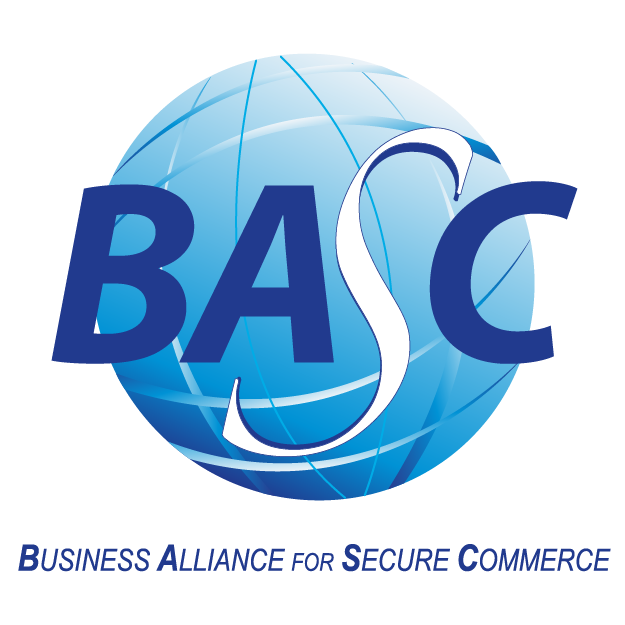Export process in Colombia

The export process in Colombia is fundamental to the country's economic growth. It allows Colombian companies to access international markets and diversify their sources of income. Understanding the necessary steps to export is crucial for any entrepreneur who wishes to enter the world of international trade. This article outlines the most important aspects of the export process in Colombia in a simple way, backed by CLMCargo.
Importance of Exporting in Colombia
Exporting plays a crucial role in the Colombian economy, becoming a key pillar of the country's development. By enabling the sale of goods and services in international markets, it generates significant revenue that contributes to the growth of the national Gross Domestic Product (GDP).
Exports not only provide foreign currency that is essential for economic stability, but also help create jobs in various industries. When companies expand their reach to other countries, they need to increase production, which leads to the creation of new jobs. This positive employment effect is especially relevant in key sectors such as agriculture, manufacturing, and services.
Entering international markets also encourages innovation and continuous improvement within Colombian companies. Facing global competition, organizations must adopt best practices, new quality standards, and advanced technologies. This modernization process is vital to maintain a competitive and sustainable economy over time.
Another relevant aspect is that exporting facilitates economic diversification. By relying less on a single market or sector, the country can mitigate risks associated with internal economic crises or price fluctuations. In this way, a more resilient business environment adapted to changes in the global market is fostered.
This dynamism in exports is supported by trade agreements, which offer competitive advantages to Colombian products in different regions of the world. These agreements promote an environment of exchange that strengthens both businesses and the economy as a whole.
Reasons to Export from Colombia
Colombian companies can benefit greatly by taking their products to international markets. Exporting not only represents a growth opportunity, but also provides significant advantages that strengthen the economy and the country’s competitiveness.
Market Diversification
One of the main reasons to export is market diversification. This approach helps companies avoid depending solely on the local economy, thus reducing the risk associated with internal economic fluctuations. By entering international markets, companies can:
- Access different consumer segments
- Expand their customer base, which is crucial for long-term sustainability
- Offset periods of low local demand with increasing demand in other countries
Increased Competitiveness
Business internationalization also contributes to increased competitiveness. Exporting allows Colombian companies to:
- Gain access to advanced technology and better management practices
- Improve the quality of their products and services through international standards
- Build a strong reputation in the global market, which can lead to more business opportunities
Establishment of Strategic Alliances
Exporting offers the opportunity to establish strategic alliances with foreign companies. These collaborations can enable:
- Reduction of operational and logistical costs
- Improved operational efficiency through knowledge exchange
- Access to new distribution channels and higher-value markets
Use of Productive Capacity
Exporting also allows Colombian companies to make more efficient use of their productive capacity. This results in several benefits:
- Increased production and economies of scale
- Maximization of resource and machinery utilization
- Opportunity to generate higher revenues by increasing sales volume
Leveraging Trade Agreements
Colombia has signed multiple trade agreements that offer competitive advantages to exporters. These agreements allow for:
- Reduction or elimination of tariffs on various products, boosting global competitiveness
- New business opportunities in countries with preferential agreements
- Easier access to broader and more diverse markets, increasing chances of success
First Steps to Export from Colombia
The export process in Colombia involves a series of key stages that entrepreneurs must follow to ensure their products reach new international markets successfully. Below are the essential steps to begin this commercial journey.
Registration with the Chamber of Commerce and DIAN
The first step for any exporter is to formalize their business by registering with the Chamber of Commerce and the National Tax and Customs Directorate (DIAN). This legitimizes the business activity and ensures compliance with tax and legal obligations.
Company Creation
The process begins with creating a company at the Chamber of Commerce, where the type of legal entity must be chosen (e.g., limited liability company, corporation, etc.), and the necessary registration procedures completed. This registration is essential to establish the legal existence of the company and gain recognition in the market.
Obtaining the NIT
The next step is to obtain the Tax Identification Number (NIT), which is essential for tax compliance. This number identifies the company before DIAN and is required for any commercial operation, including exporting.

Registration in the DIAN’s Muisca System
DIAN has a system known as Muisca, where exporters must register. This platform facilitates the management of customs and tax procedures, allowing access to multiple online services and tools.
Obtaining the Electronic Signature
The electronic signature is another crucial requirement for exporters. This tool allows for digital processing and is necessary for submitting documents and declarations to DIAN quickly and securely.
Tariff Classification of the Product
Once the initial registrations are completed, the exporter must classify their product according to the international tariff system. This classification is vital because it determines the taxes and duties that will apply to the goods at the time of export.
Market Research and Demand Identification
Market research becomes an essential tool to identify business opportunities in the destination country. This includes analyzing consumer trends and the characteristics of the target sector.
Sector Behavior Analysis
Carrying out a detailed analysis of the behavior of the industry or sector in which one wants to export is key. This analysis will help understand demand fluctuations and consumer preferences—factors that directly influence the export strategy.
Competitor Identification
Identifying direct competitors in the international market is fundamental. Knowing who they are and what they offer allows businesses to adjust their commercial proposal and effectively stand out in the market.
Market Access Conditions
Understanding the conditions for market access is important. This includes tariffs, import requirements, and specific regulations that may affect the entry of the product into the destination country.
Sending a Quotation and Setting the Payment Method
Once market research is complete, the next step is to establish contact with potential buyers. During this phase, quotations are sent and the terms and conditions of the transaction are discussed. Clarifying the payment method is crucial to avoid issues in the future.
Required Documentation
Having the appropriate documentation is essential to carry out the export process without setbacks. The main documents required are:
Commercial Invoice
The commercial invoice must include detailed information about the exporter and importer, a precise description of the product, delivery terms, and the total transaction value. This document is key for customs clearance.
Packing List
The packing list is a document that enumerates all the products being exported, along with their characteristics and specifications. It is essential for logistical control and verification at the destination country’s entry point.
Certificate of Origin
The certificate of origin is a document that certifies the country where the product was manufactured. This certificate may be required by the importing country’s authorities to determine tariffs and whether the product qualifies for free trade agreements.
Logistics and Customs Aspects in the Export Process
Logistical and customs aspects are fundamental to ensure that the export process runs smoothly. Proper management in these areas reduces costs and ensures that products reach their destination efficiently.
Cargo Transport and Insurance
The transportation of goods is one of the most critical stages in the export process. Choosing the appropriate mode of transport depends on several factors, including the type of product, destination, and agreed delivery times. There are various transport options, each with its own characteristics and associated costs:
- Air Freight: Ideal for perishable or high-value products. Although it is the most expensive method, it allows for fast delivery.
- Sea Freight: Commonly used for bulk shipments. Although delivery times are longer, it is usually more cost-effective for large volumes.
- Ground Transportation: Essential for regional transport. It may be useful for internal distribution before reaching the port of departure.
Purchasing cargo insurance is equally important. This type of policy protects against losses or damages that may occur during transportation. Companies should evaluate the cargo’s value and associated risks to select appropriate coverage.

Procedures with the Single Window for Foreign Trade (VUCE)
The Single Window for Foreign Trade (VUCE) is a system that allows exporters to carry out all necessary procedures for exportation in a centralized manner. This process simplifies bureaucratic management and ensures compliance with current regulations. To access the system, a valid electronic signature is required, facilitating the submission of documents and communication with the relevant authorities.
Exporters must complete the required information in the system, including details about the products to be exported, supporting documents, and any additional requirements requested by the competent entities. The integration of this system has improved efficiency and transparency in Colombian foreign trade.
Submission of the Export Declaration (DEX)
The Export Declaration (DEX) is the formal document submitted by the exporter to customs to report the goods intended for export. The DEX must be submitted before shipment and is essential to guarantee the customs clearance of the products.
This document must include detailed information about the goods, such as the product description, tariff code, quantity, and value. The DEX must be signed by the exporter or an authorized representative, and all information must be accurate, as any error can result in delays or penalties.
Proper management of the DEX contributes to a smooth export process, minimizing the risk of issues at customs checkpoints.
Exporting Services from Colombia
The export of services has gained significant relevance in Colombia’s economy. This sector encompasses a variety of activities that enable entrepreneurs to access international markets without delivering a physical product. Below are key aspects to facilitate this process.
Infrastructure for Services
Colombia has a robust infrastructure that supports service exports. This includes not only advanced technology but also a qualified workforce. Some of the most prominent services include:
- Consulting services
- Information and Communication Technology (ICT) services
- Tourism and related services
- Education and training in various fields
- Financial and accounting services
Companies must invest in developing and modernizing their infrastructure to ensure competitiveness. This includes implementing technological systems and updating internal processes. Creating an environment that fosters innovation is vital to increasing the quality of services offered internationally.
Seeking Local Partnerships
Establishing local partnerships is crucial for success in service exports. These collaborations allow Colombian companies to adapt to the specificities of the foreign market and gain local insight. Recommendations for forming effective alliances include:
- Identifying strategic partners in the destination country
- Participating in trade fairs and networking events
- Building relationships with government agencies and trade associations
- Developing joint programs that combine capabilities and resources
- Investing in training for local teams operating in the foreign market
Partnering with local allies not only expands a company’s reach but also facilitates market entry. With a partner familiar with the market dynamics, companies can offer solutions better aligned with customer needs. These alliances are key to sustainable growth in service exports.
Challenges and Myths in the Export Process
The export process involves various challenges, and it’s common for myths to mislead entrepreneurs. Recognizing and debunking these misconceptions is essential to easing entry into international markets.
Common Myths about Exporting
There are several myths that may discourage Colombian entrepreneurs from pursuing exports. Some of the most frequent include:
- Exporting is only for large companies: Many believe that only large corporations can export. However, in Colombia, there are numerous opportunities for small and medium-sized enterprises (SMEs) to access international markets.
- The export process is extremely complicated: While there are rules and procedures to follow, having the right information and the support of institutions like ProColombia can significantly simplify the process.
- A large initial investment is needed: The idea that a high amount of capital is required to begin exporting can discourage many entrepreneurs. In reality, there are opportunities to start with accessible and scalable investments.
- All markets are the same: Some assume that a product successful locally will automatically succeed abroad. The truth is that each market has its own characteristics and preferences, which must be studied beforehand.
Support and Advisory Programs from ProColombia
To address the challenges mentioned above, ProColombia offers various support programs that facilitate exporting by providing guidance and resources to entrepreneurs. These programs include:
- Training in Foreign Trade: ProColombia organizes workshops and courses that educate business owners about various aspects of international trade, from registration to logistics.
- Personalized Advisory: One of the most valuable benefits is access to advisors who guide exporters through the process, offering support on regulations and market requirements.
- Access to Commercial Networks: The organization connects Colombian exporters with international buyers, participating in trade fairs and events that promote cross-border business.
- Market Information: ProColombia provides valuable data on trends, consumer preferences, and competitive analysis, enabling entrepreneurs to make informed decisions about their export strategies.

Benefits of Exporting from Colombia
Exporting from Colombia brings a variety of advantages that can positively transform a company’s operations. By entering international markets, businesses not only increase their revenues but also secure their relevance in an ever-changing and competitive environment.
Income Diversification
One of the main benefits of exporting is income diversification. This allows companies to avoid relying exclusively on the local market, resulting in less vulnerability to domestic economic crises. By exploring new markets, entrepreneurs can:
- Reduce the risk associated with local economic fluctuations
- Increase income sources, mitigating adverse impacts on the business
- Access foreign currencies, which can be advantageous in terms of exchange value
Market Expansion
Exporting opens up opportunities for companies to reach a much broader audience. By selling products in international markets, companies can:
- Expand their customer base beyond national borders
- Enter niche sectors that may be profitable and less saturated
- Leverage the demand for Colombian products, which are often valued for their quality and unique characteristics
Sustainable Business Growth
The ability to export contributes to the sustainable growth of companies. By diversifying and accessing new markets, they can:
- Increase long-term profits, ensuring the viability of operations
- Foster innovation by being exposed to new trends and international consumer needs
- Strengthen brand image and reputation by establishing themselves in more competitive markets
The internationalization process benefits not only the exporting company but also drives the national economy, promoting joint development that supports the growth of various economic activities in Colombia.
International Business Opportunities
Globalization has opened new doors for Colombian exporters. International business opportunities offer access to broader and more diverse markets. Connecting with partners and clients abroad is key to business growth.
Participation in International Trade Fairs
International trade fairs are essential events for showcasing Colombian products and services. Participating in these fairs allows companies to:
- Present their offerings to a global audience
- Establish contacts with potential buyers and distributors
- Gather insights on market trends
- Assess the competition and specific needs of the target market
Colombia hosts several well-known fairs that attract exhibitors and visitors from around the world, such as the Bogotá International Book Fair and the ANATO Tourism Showcase. These platforms are highly effective for generating business opportunities and establishing lasting professional relationships.
Evaluation of Logistics Operators
Success in international trade also depends on having efficient logistics. Evaluating logistics providers is essential to ensure the proper transportation of goods to foreign markets. Key considerations include:
- Reputation and experience of the provider
- Transportation costs and rates
- Ability to handle the specific type of product
- Knowledge of customs regulations in destination countries
Choosing the right logistics operator not only ensures efficient delivery but also helps improve competitiveness by reducing shipping costs and delivery times.
Export Indicators, Figures, and Data
Export-related indicators and statistics are valuable tools for making informed decisions. Through different sources, such as the Ministry of Trade and ProColombia, it is possible to access key data that reflect the state of foreign trade. This data includes:
- Export figures by sector and product type
- Main destination markets for Colombian products
- Export trends over the years
- Impact of trade agreements on export performance
Having access to this information allows companies to identify new opportunities and develop more effective strategies in an increasingly competitive global context.






